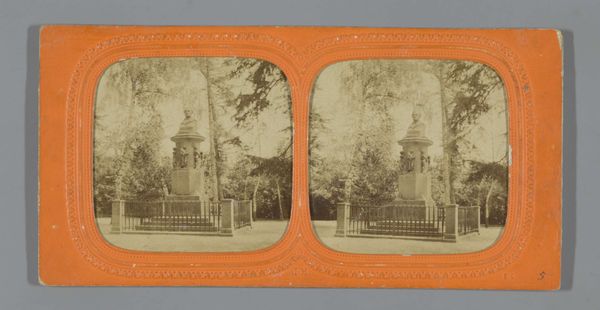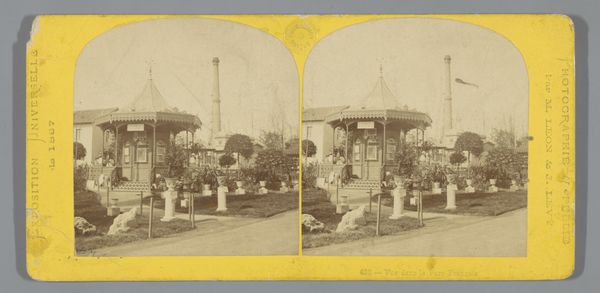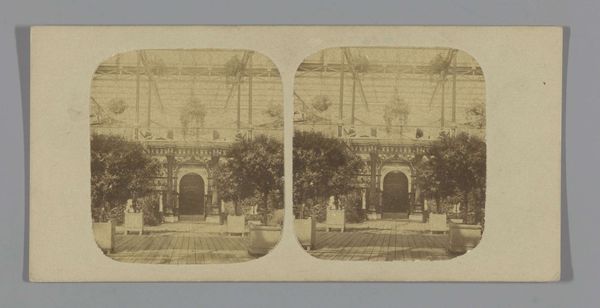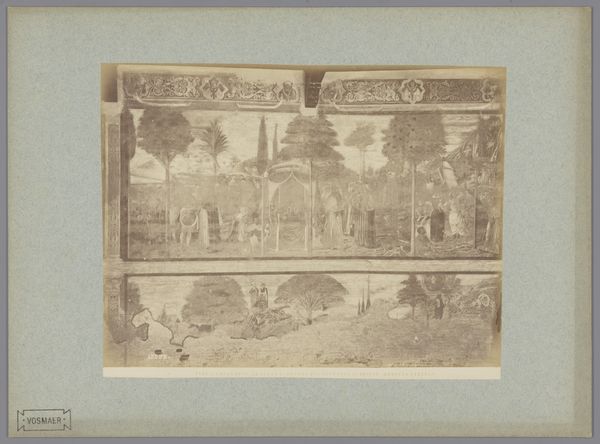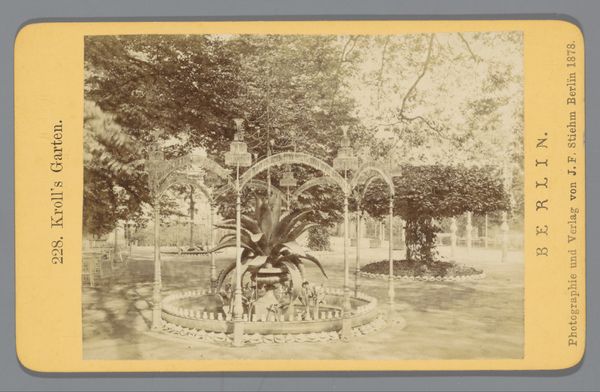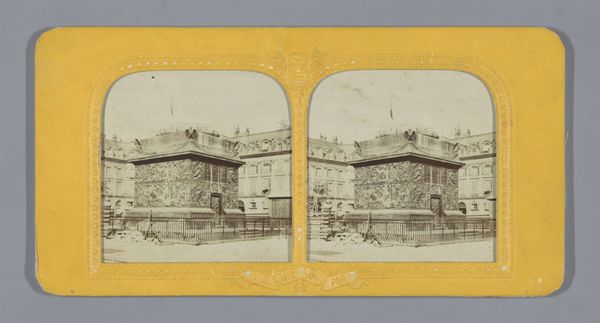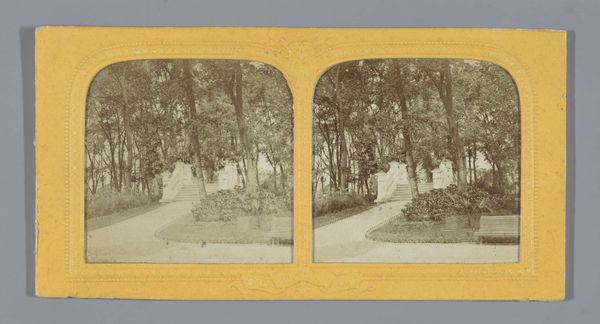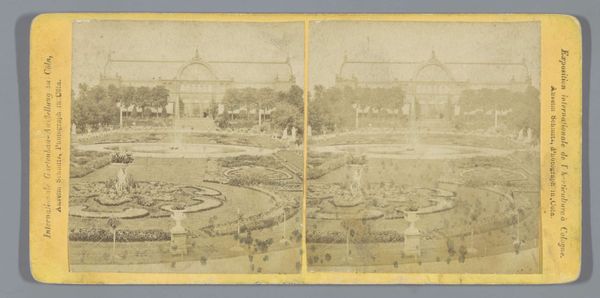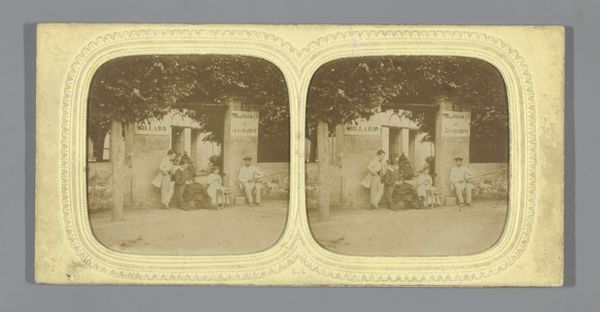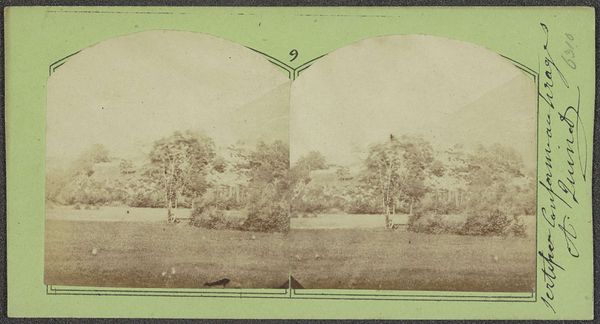
Gezicht op een muziektent in de tuin van de Champs-Elysées c. 1850 - 1880
0:00
0:00
print, photography, albumen-print
# print
#
photography
#
orientalism
#
cityscape
#
genre-painting
#
albumen-print
Dimensions: height 83 mm, width 169 mm
Copyright: Rijks Museum: Open Domain
Editor: This albumen print, dating from around 1850-1880, offers a "View of a bandstand in the garden of the Champs-Élysées". It feels both very immediate and very distant to me at the same time. How do you interpret this work, considering the process involved? Curator: For me, the albumen print, a specific photographic process, is key here. Its materiality speaks volumes about production and consumption during that era. The collodion process used to create the negative, and the subsequent printing with albumen from egg whites, were laborious, weren't they? Consider the scale of egg production needed for widespread printing. Editor: I hadn’t thought about that aspect before. All those eggs! Curator: Exactly! And the print itself became a commodity, reflecting the burgeoning tourist industry and a growing middle class with disposable income. We can see the social context embedded in its very creation. This isn't just an image; it is evidence of a whole network of labor and resources. How does seeing it as a manufactured object change your perception? Editor: It shifts it from just a pretty scene to thinking about who was making this and why. The act of mass-producing and consuming images feels incredibly relevant, even today. Does that tie in at all with the “Orientalism” tag? Curator: Absolutely. Photography itself, as a technology, participated in the project of documenting and, therefore, possessing the world, especially spaces perceived as 'other.' While this scene is Paris, the very act of capturing and disseminating it shares some of that colonial impulse. What do you make of that connection? Editor: So it’s not necessarily *of* the Orient, but the photograph, as a *tool*, carries orientalist implications, even in depicting a Parisian scene? I think I’m starting to see how the materiality and the social context are intertwined here. Thanks! Curator: Precisely. It is a reminder that even seemingly benign images are products of complex historical and material forces.
Comments
No comments
Be the first to comment and join the conversation on the ultimate creative platform.
